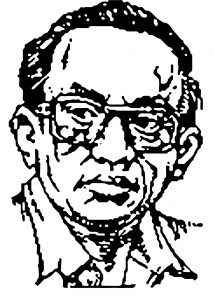It all begins with word(s)…
by Prof. DR. Sudjoko

In a wider sense, art is something that people do everyday; the art of cooking; the art of babysitting; the art of selling; the art of diplomacy; the art of governing; the art of war; etc.
Gilbert Highet taught us The Art of Teaching. Ernest Dimnet, The Art of Thinking. And, Erich Fromm, The Art of Love. The system lovers may even use terms like mechanical art, practical art, impractical art, domestic art, moral art, immoral art, social art, etc. I found most of those terms in a dictionary that is transparent and not pretentious; and others from people who were saying it, both genuinely and pretentiously. Mohammad Ali, for example, is someone who always said that boxing is art.
Flower arrangements? According to the Japanese, it is fine art. We do it gratuitously, as if it is gimcrack, therefore we never thought of it as a high form of art. Hence we never thought of teaching it in art schools or whatever kind of school. We cannot even mention it when we talk about art.
We can go on with this and keep unravelling many examples of our fear and pettiness using our educational background as motives. Unfortunately, now it has been made clear that art schools, schools of artists, aesthetics and art history books knows very little about art. Or: Knows too much about something that is very limited.
This is the root of the problem: The understanding of art is so exclusive, so special, and is really above anything else in the world. One can also see this through the obvious similarities in the art school’s curriculum all over the world, instead of acknowledging its particularities. (But of course this is not the point of this essay.)
If everyone makes art, then everyone is an artist. Therefore nothing is exclusive about art and nothing is weird about artists. Each and everyone does the art of living and loves the art of loving.
Human beings are not compartmentalized into a small group of artists and a seriously large group of non-artists. Therefore, in short, art is not something that is that ultimate–if we do not worship acts of stealing and brainwashing. What makes art big and lovable is dependent on our attitude towards art; around that, we shall discover its visions and features that we praise and condemn.
Art is not the main prerogative in many activities in the whole wide world, therefore it is okay to use terms like ‘crafts’, ‘handicrafts’, ‘craftsman’, ‘artisan’, ‘technician’, etc. As far as those terms are not used within in a demeaning manner within the art world. Therefore, terms like ‘arts and crafts’ do not mean anything.
But the problem is more than just words, as we are aware. People tend to allow socio-economic and cultural division. When one say ‘handicrafts’, the immediate association would be farmers, poor ones. Or, say, when one think of ‘farmers’, then whatever they are making must be ‘crafts’ and can never be ‘arts’. Art is accused of being belonging to middle and upper class people who are relaxed in the cities, including their babies’ dirty scribbles.
In this sense, art has nothing to do with the anything else that matters in life such as public figures, people in power, and the society itself. The ‘art school’, ‘art history’, ‘art exhibition’ ‘art critic’, ‘art philosophy’, and whatever that is art-related therefore is understood as something that is disconnected to the concerns of the people and the society.
Accordingly: ‘Art’ is an odd word.
If ‘art’ can be that silly, why don’t we throw it away? Affandi the painter said, “I am not an artist. I am a painter.” We may think that he is being illogical, because a painter is an artist anyway. But, Affandi stated that he is a drawing expert, which means that his job is to draw or to make drawings. In reality, the result of his hard work are ‘drawings’ anyway, not that ‘art’ that you may be thinking about.
It is unavoidable to deny the fact that Rembrandt and the farmer or even my lover can make ‘works’. If that is the case, then it would mean that every human beings are the same. Because of this line of thinking, one can start to understand the unnecessariness of saying ‘art works’.
I did not think that it would be easy for people to arrive to the extremities that I am proposing. I also think that it might not be wise to get there. Therefore, on the contrary, I am not saying anything new.
Since the beginning of the 20th century, it is not like we had no word with similar meaning to ‘art’. It is only recently that we understood ‘seni’ as ‘art’. In the beginning, seni is something beautiful, for example small rain, and seni is demanded to be ‘beautiful’ then some Indonesian people got to thinking that ‘art’ must be seni. We even slowly forgot the initial meaning of that word.
This tells you that, only until very recently we are made aware to art and artists. Long before, what we have is empu (master), tukang (artisan), pandai (handyman), etc. These words points to skills and artistry. Someone who is a handyman is an expert. Whether one is famous or just an average one, a sculptor is a sculpting expert (pandai pahat) and will never be called a sculpting artist or an artist.
What I wanted to say is that the invention of the word artist and art is the heart of this problem. We began differentiating what is not necessarily different such as art and craft, artists and craftsman or artisans. We do not even debate about whether Indonesian art really exist or not. In many cases, when people uses these terms, they do not really know what they mean.
But, like I said before, the social, economical and cultural implications are clearly monopolized by middle and upper class people in urban areas. The same thing can be said for the term ‘artist’. In a country that is industrially (and financially) left behind, in which the gap between the rich minority and the poor majority is so big, these things need to be made significant.
I think, the problem is more about the person, whether this person is stupid, average, smart, or expert; rather than on the title whether one is an artist or just an craftsman.
It is as if we allow these qualities and these divisions to be related; why don’t we relate it to blood types, skin color, education level, or economical state? These terms that we use need to be a way to generate more respect towards people with skills, artistry, works and creations within our society.
With that, we may stop talking about ‘art’ when we actually mean something pretty particular such as a poetry or several paintings made in some city. We will stop making ‘art exhibitions’ when we actually are only making ‘object exhibitions’, or something like ‘objects from the city exhibition’. Slowly, we may stop admiring ‘the artists’ when we realize that they maybe just be a group of poor yet educated city people. We still have crochet makers, skin artisan, ornament sculptors, and so many more people that makes our life easier and way more beautiful at the same time. There are the ones that we need to be admiring and celebrating. These are the ones that deserve our friendliness and support.
I am not saying that we have never done this. There are just too many abuse, misuse and halfheartedness that one can see the remarks clearly. These leftover marks the still existing inequality, injustice, ignorance, chaos, and blackmail practice. People who are experts in beautiful things, for example, are not well paid; and the employers are not ashamed of it. Meanwhile, city people keeps on generating inappropriate publicities for young people. They are admired for their immaturity and laziness, simply because they are involved in what people the so-called fields of ‘arts and culture’.
We will also stop writing in cultural magazines or cultural columns in newspapers for we are only speaking of urban problems. We also allow ‘art history’ to be something that is only happening in the cities, done by a very small group of people, in a very limited scope.
What we call “aesthetics” is just something that a very small number of city people are thinking on what another small number of city people are doing in a very small field. This line of thinking and attitude is applied by art education, art appreciation, and even art critic. It piles up, from talent, skill, perspective and sometimes people’s need, however we try to keep ourselves within the jurisdiction of “beauty”.
We can always say that nuclear experts can only be found in cities and amongst higher education level of people; or, if in the village, then it must be a very modern village. Unfortunately highly-skilled people and smart people are just everywhere, and they can always make things in a well done manner. Most of them deserves to be appreciated more, paid more and better social lives.
If we want to point our fingers on those who are making these mistakes, we need to start by pointing them to ourselves first. Yes, us. Theoreticians, educators, pedagogues, editors, MC, journalists, and critics.
In the arts, many of our power and influence that are being used for egotistic and narcissistic reasons. We city explorers like to make everyone love the art of the big city.
All cities and villages, the poor and the rich, everyone have to jump into our train. Into our thinking and doing state of mind. If not then we will treat them as jokes. Mega cities and big nations are coming closer to us along with their greed, self-publicity and self-exploitation.
This is how we argue it, “Isn’t it normal?” Isn’t it always the case with the civilization? We can think of it only as a starting point, but we quickly need to find ways to make a better future.
